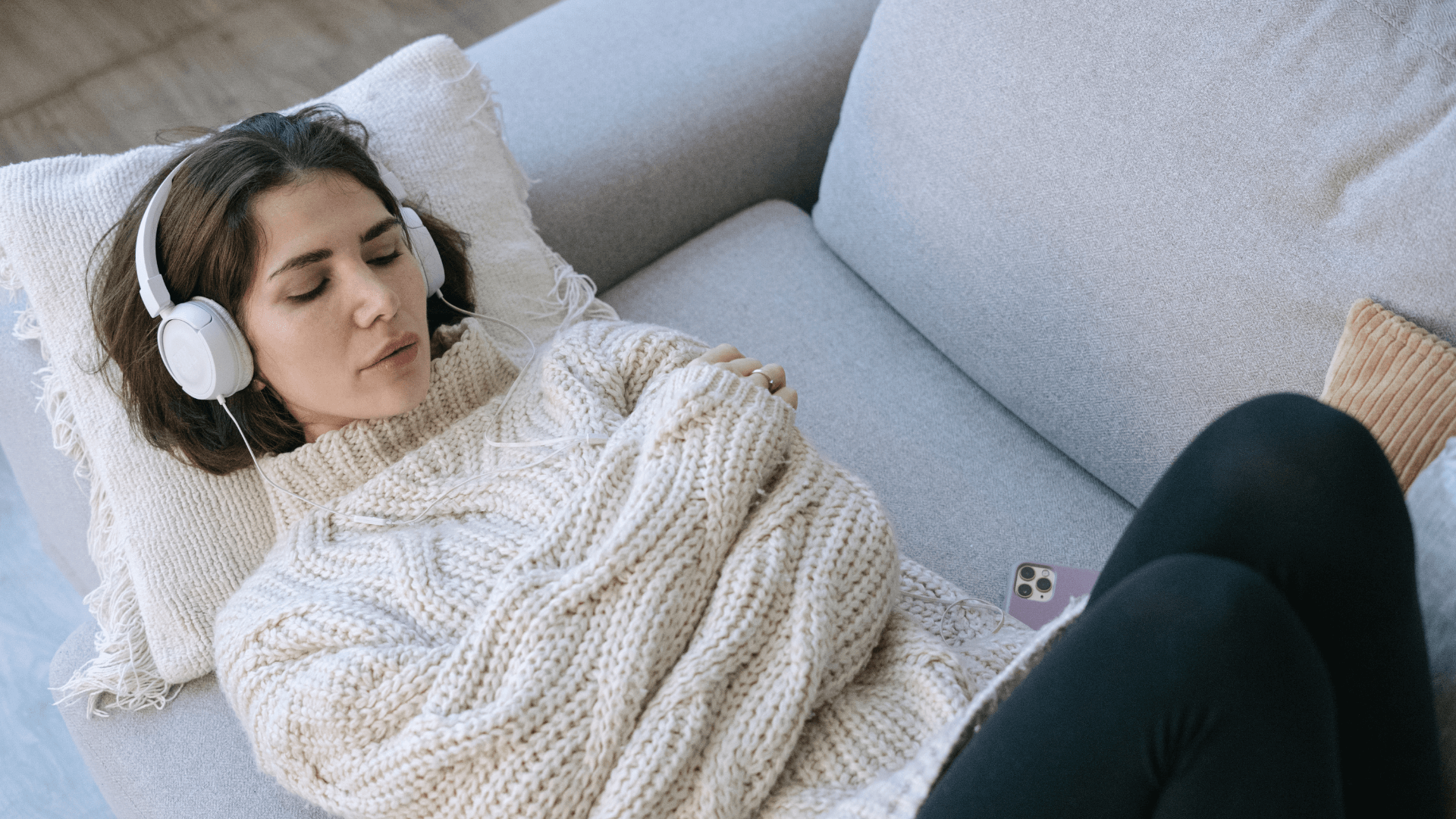ASMR — What’s the Buzz?
ASMR (Autonomous Sensory Meridian Response) is that tingling, soothing feeling some people get from certain sounds or visuals. When it comes to sleep, the top ASMR triggers are:
- soft whispering
- tapping
- brushing
- crinkly sounds
These help relax your nervous system and quiet your thoughts, making it way easier to drift off. Tons of creators on YouTube and TikTok make sleep-friendly ASMR content, so it’s easy to find what works for you.

Sleep Podcasts & Chill Soundscapes
Sleep podcasts aren’t just bedtime stories anymore. Many blend calming voices with nature sounds like rain, ocean waves, or crackling fire. Some people also use sound frequencies like binaural beats or isochronic tones.
These sounds help your brain shift into slower, sleepier rhythms, making it easier to fall asleep and stay asleep.

Digital Detox & Blue Light Filters
If you’re scrolling or binge-watching before bed, your screen’s blue light is basically telling your brain to stay awake. It messes with melatonin — the hormone that helps you sleep.
Simple fixes:
- Put your phone down at least an hour before bed
- Turn on your phone’s blue light filter
- Swap late-night scrolling for calming audio or journaling
These small changes help your brain shift into sleep mode.

Guided Breathing & Visualization Apps
Apps like Calm and Headspace make relaxing ridiculously easy. Guided breathing can lower stress hormones and help you unwind instead of overthinking in bed.
Just a few minutes of slow breathing or visualization can help your body and mind chill out fast.
![]()
Journaling & Mood Tracking
Sometimes your brain needs a place to dump all the thoughts running around before bed. Journaling helps clear mental clutter so you’re not stuck overthinking.
Using a cute journal or mood-tracking app makes it feel more like self-care than homework.

Sleep Tech, Track or Train Your Sleep
Sleep tech is leveling up. Devices like Oura Ring and Whoop track your sleep cycles and give insights into your patterns.
Then there are devices that don’t track sleep but help you fall asleep faster like NeuroVIZR. Instead of measuring your sleep, it uses light and sound stimulation (such as flickering patterns and 40 Hz audio) to help your brain shift into deeper relaxation and better sleep rhythms.

Conclusion
Good sleep doesn’t have to be boring or complicated. With modern hacks like ASMR, calming soundscapes, digital detoxes, and smart sleep tech, you've got plenty of options to upgrade your rest. Try a few and see what vibes with you, your mind and body will thank you in the morning.
FAQ
What kind of ASMR works best for sleep?
Soft whispering, tapping, brushing, and crinkling sounds are some of the most effective triggers for helping people relax and fall asleep.
How do binaural beats help with sleep?
They play slightly different frequencies in each ear, helping your brain sync into a calmer, sleepier state.
Can blue light really mess with my sleep?
Yes. Blue light suppresses melatonin, the hormone that tells your body it’s time for sleep. Using filters or avoiding screens helps protect your sleep cycle.
What’s the difference between sleep trackers like Oura Ring and NeuroVIZR?
Oura Ring and Whoop track your sleep stages and overall sleep quality. NeuroVIZR uses light and sound stimulation to help your brain relax and shift into better sleep rhythms, but it doesn’t track sleep cycles.



A Gentle Guide to Recovering from Burnout, Restore Energy & Focus
Transformative NeuroVIZR App Update Arriving This Christmas